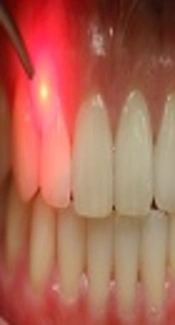Dear Editor,
Dental caries as the most prevalent infectious disease may affect the child population's health, growth and development (1, 2). Accordingly, appropriate dental treatments are required to restore oral and subsequently general health.
Most child patients cope with in-office routine dental treatments by receiving communicative behavior management techniques. However, there are some indications for general anesthesia where in-office services cannot be conducted (3, 4). On the other hand, there has always been an attempt to use the technology of the day in pediatric dentistry. One relevant advanced modality is laser therapy, which can be suggested as an appropriate alternative of conventional dentistry (5).
Laser therapy is well known as acceptable by child population due to its minimally invasive nature (6, 7). By using laser, minimum amount of sound hard tissue is removed, allows for conservative tooth preparation and low risk of pulp exposure (8). There are several applications of various types of laser in pediatric dentistry (5). Laser is a useful tool to diagnose and monitor carious lesions (7, 9, 10). In the field of caries prevention, laser is used for the increasing of enamel surface resistance against acid attack, and for the conditioning of tooth surface for sealant placement and preventive resin restorations (5, 7). Another hard tissue application is for tooth restoration and pulp therapies (5).
Benefits of laser therapy in child dental services are as follow: no or minimal amount of anesthetic solution needed (7, 8), no drilling and the absence of handpiece vibration, noise and pressure during caries removal (5, 8), no consequences such as intraoperative and postoperative soft tissue numbness and biting, minimizing the dental fear and apprehension in child subject (7). The other benefit is its bactericidal effect especially favorable in root canal preparation (7). In addition, one benefit that cannot be overemphasized is the possible performing multiple sextant therapies in each session and reducing the need for operation under general anesthesia.
All of these, promote children’s dental behavior, save their cooperation capacity and at the same time make the procedure less traumatic, more pleasant, and able to alleviate patient discomfort and also make the child safe. Familiarity with various types of laser and their physical properties along with applying safety considerations are prerequisites to use this micro-dentistry modality. Finally this fact should be mentioned that behavior management techniques are again considered as integral part of laser pediatric dentistry, as used in conventional child dental services.
